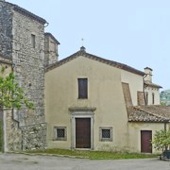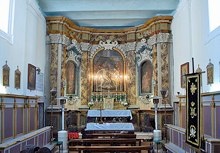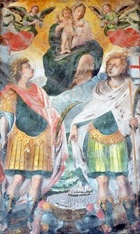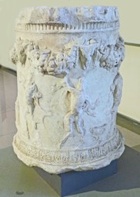



This Benedictine abbey was established on the site of an early Christian cemetery that is traditionally associated with the site of the burial of St Secundus. (as in BHL 7559). The peace treaty of 1208 between Amelia and Todi was signed here. In the 16th century, the church became the home of the Confraternita della Buona Morte, which was dedicated to providing for the burial of the poor, presumably because St Secundus was revered as the protector of the dead.
Interior

Madonna and Child with saints (16th century)

Roman Artefacts
Two Roman artefacts were documented in San Secondo in sketches (1564) by the sculptor and antiquarian Giovanni Antonio Dosio that survive in the Staatsbibliothek, Berlin:
-
✴A cylindrical marble altar (1st century BC) with reliefs of dancing figures, is now in the Museo Archeologico.

-
✴An important Latin inscription (CIL XI 4348), which has unfortunately been lost, recorded that Titus Pettius, son of Titus, grandson of Titus had made a gift to “Iove Optumo Maxsumo” (Jove, Optimus Maximus, the supreme god of the Roman pantheon). The archaic language suggested that the inscription dated to the middle of the 2nd century BC, which is early for the use of Latin in Umbria and for the veneration of Jove Optimus Maximus there. (This inscription is described in its wider context in the page Latin Inscriptions after 295 BC.) Guy Bradley (referenced below, at p. 294) dated it to ca. 150 BC.
Read more:
G. Bradley, "Ancient Umbria", (2000) Oxford
Return to Monuments of Amelia.
Return to the Walk around Amelia.

